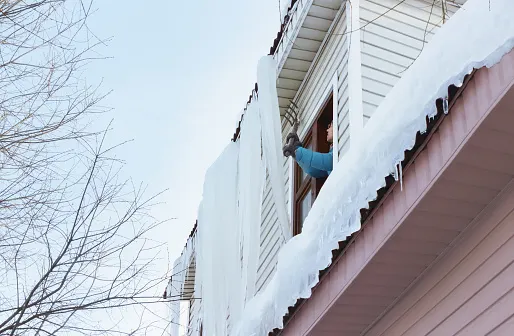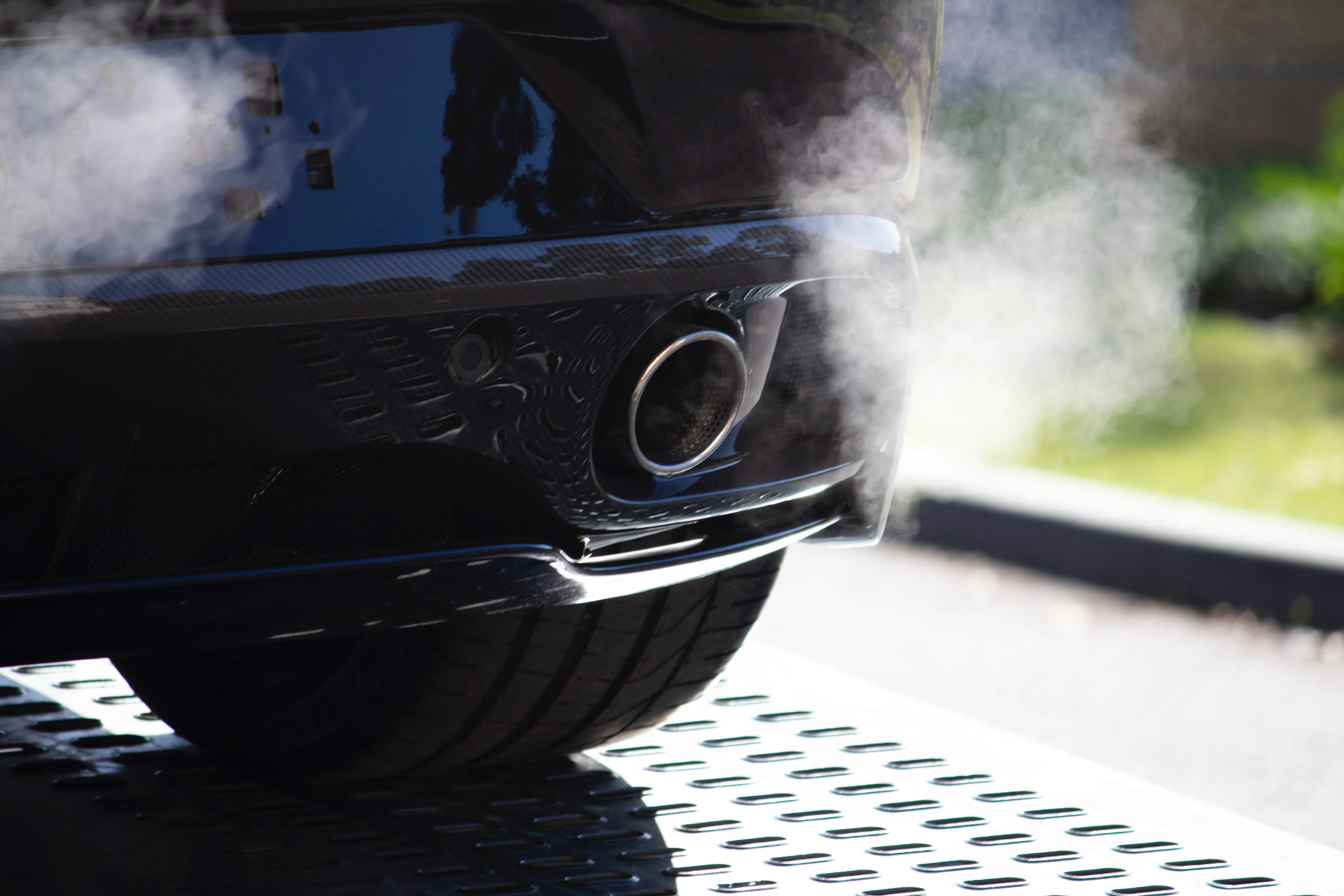
Six dangerous winter hazards to watch out for this season
Beyond the cold, there are some aspects of the winter season that can badly hurt, even kill, people who don't watch out for them.
By now, most people across Canada have had their first dose of winter weather – and for some cities, more than one.
Winter is definitely settling in, and while the cold, darkness and snow are easy enough to anticipate, there are other aspects of the season that can be a hazard to the unwary. If ignored, the result can be injury, illness, or even death.
Here are six to prepare for as the nation hunkers down for the coming winter.
IDLING IN THE SNOW
Being stuck in the snow in your car is a big enough headache already, particularly when you don’t expect help to arrive immediately. And with the continued cold, you may be tempted to keep your engine running on and off to keep the heater going.
But if the snow is covering your exhaust pipe, keeping the motor on could have deadly consequences. Remember, the exhaust pipe’s specific purpose is to ferry carbon monoxide and other harmful gases away from your vehicle. If the pipe is blocked, CAA and other road safety groups warn those gases could build up in the car’s cabin instead, putting you and your passengers at risk of carbon monoxide poisoning. Even idling in a garage is risky.

Matt Boitor/Unsplash
It can and does happen: In 2018, Alberta RCMP said carbon monoxide poisoning was responsible for the deaths of three people in an idling car near Conklin. It can happen quickly, too: After several deaths were blamed on CO2 poisoning after a blizzard in 2016, New Jersey broadcaster WABC teamed up with a local fire department to run an experiment on how long the gas can fill a car’s cabin to dangerous levels. It took about a minute and a half.
RUNNING A GENERATOR INDOORS
Winter weather can be brutal enough to disrupt power infrastructure. Even in more temperate places like Vancouver and the Greater Toronto Area, a poorly-timed ice storm or wind storm can leave people in the dark, sometimes for days, and that’s a much more common occurrence elsewhere.
If you’re facing a prolonged winter outage, a portable generator can be a godsend, but a serious danger if you run it indoors. Most generators emit carbon monoxide, which can build up in an enclosed room in just a few minutes. As with blocked car exhaust pipes, the results are carbon monoxide poisoning and death, and the risk is also present when running charcoal barbecues indoors to keep warm.
Between 2005 and 2017, carbon monoxide poisoning claimed 900 lives in the U.S., according to Consumer Reports. It happens in Canada, too: the 2013 ice storm in southern Ontario was blamed for at least two carbon monoxide poisoning deaths, and in Toronto alone, EMS calls for CO poisoning were five times normal during the crisis.
EATING THE SNOW
A coat of fresh-fallen snow can give your neighbourhood a pristine veneer, and it may be tempting to scoop up a handful to get a more literal taste of the season. However, depending on where you live, that wintry mouthful may actually be bad for you.
The risk starts relatively close to the ground: it may be contaminated with antifreeze and salt, as well as small concealed objects (which is why pet experts advise against letting your dog have any while out on a walk).
Then there’s what’s in the sky: As snow falls, it can act as a kind of net, catching pollutants as it falls before depositing them on the ground, particularly if it’s near a busy road or industrial district.
The upshot is that fresh-fallen snow in places away from populated areas is a lot cleaner and fit to be consumed – but even then, the longer it stays on the ground, the more it will absorb bacteria or allergens.
FALLING ICE
People of a certain age remember the crippling 1998 ice storm in Ontario, Quebec and part of the Maritimes, but ice storms aren’t a once-in-a-generation thing. Lesser, but still damaging storms happen from time to time (the 2013 ice storm in Ontario left some people without power for days), and as climate change advances, there’s evidence they are becoming more common. Beyond that, there’s always the ice buildup that comes from the natural freeze-thaw of any winter season.
Aside from the power outages and danger to drivers and pedestrians, that ice can also leave buildings, power lines and other tall structures completely coated – which, when temperatures rise, can pose a serious risk to anyone below.

STOCK PHOTO: A man removes giant icicles and snow from the roof through the window using pitchfork on a clear winter day in the countryside. (Credit: Getty Images/Palana997)
Falling ice can, and does, injure people, prompting police to normally warn pedestrians to keep their eyes to the sky to avoid being hit after there’s been a few hours of freezing rain.
Even more dangerous after such events are the roads. Drivers should always remember to clear the ice off their cars before setting out, rather than leaving it on. As the car warms, the ice may dislodge, and if the chunk is large enough, it can be a hazard to people in vehicles behind you – as happened in January 2020, when a driver in Ontario was struck in the face by a hurtling chunk of ice that smashed through his windshield.
WATCH BELOW: TOURIST DESTINATION TURNS DEADLY WHEN FROZEN FALLS CRUMBLE
ICICLES
Another feature of that seasonal freeze-thaw is icicles – pretty to look at, but also a potential health hazard.
We don’t know if lurid stories of icicle impalements really happen too often, but icicles are still sharp, and cuts or lacerations from one aren’t out of the question. Keep in mind as well, aside from the pointy end, icicles can also be large and heavy, so a direct hit can also injure you. If it strikes your head, a concussion is also not beyond the realm of possibility.
If you’re out walking in the woods, avoiding them is a matter of keeping a watchful eye skyward, but if they’re hanging off your eavestroughs at home, it’s not just a health hazard – it could also be a sign of poor roof insulation or ventilation. In that case, the hazard is more to your wallet than your wellbeing, but still, it’s best to have it seen to by a contractor when you can.
THE COLD!
Then, of course, there’s the most obvious: the bitter cold that lasts for months on end, coupled with the usual winter darkness.
For most people, used to wearing the right kind of jackets and gloves, the cold is really more of a discomfort, so it’s easy to forget how extremely dangerous it is when not taken seriously – so dangerous in fact, that many Canadian cities have extreme cold weather alert protocols that kick in below a certain temperature level, to free up resources to help the homeless, and other people who don’t have adequate clothing or shelter.
In Canada, it can get so cold that your corneas freeze, and exposed skin can freeze in minutes. Once your core body temperature drops below its usual sweet spot, your body can glitch in a number of different and unpleasant ways. And if you can’t get warmed up, extreme cold can absolutely kill you.
Here’s more detail on five terrible things extreme cold does to the human body.






